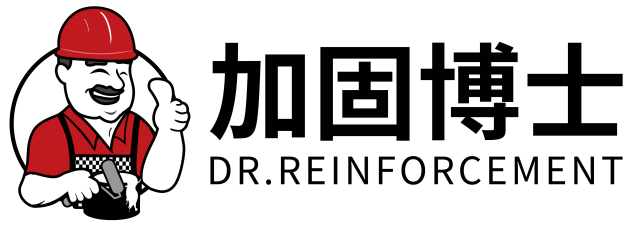Understanding Carbon Fiber Cloth Composition
Raw Materials: From Polymer to Carbon
Carbon fiber cloth starts life with some pretty good raw stuff, mainly polyacrylonitrile or PAN for short, along with pitch. What matters most here is what goes into making these fibers because it really determines how the final product turns out. Most carbon fiber on the market today comes straight from PAN material, accounting for around 90% of production. The other 10%? That's where pitch and old fashioned rayon come into play. When manufacturers pick their starting materials, the quality makes all the difference in the world for things like how strong the fabric is, how stiff it gets when worked, and whether it holds up under heat stress situations. This basic building block selection process has huge implications for end results across different applications.
Turning polymers into carbon is all about getting every step just right. Take carbonization as an example. When making carbon fibers from PAN (polyacrylonitrile), manufacturers heat the material at extremely high temps without oxygen present. This process basically burns off anything that isn't carbon while locking in those special fiber qualities we want. After this intense treatment comes another round of processing where they treat and size the fibers so they stick together better when woven into fabric. And here's something interesting: if the starting material isn't good quality, everything falls apart downstream. That's why serious producers insist on using premium raw materials throughout their operations. Better inputs mean stronger, more reliable carbon fiber cloth at the end of the day.
The Role of Carbon Fiber Fabric Cloth Structure
How carbon fiber fabric is structured really determines what it can do mechanically and where it gets used. We see three main types out there: unidirectional, woven, and non-woven configurations, each bringing something different to the table for specific purposes. With unidirectional carbon fiber, all those super strong fibers line up in one direction only. That gives amazing strength along that axis, but if someone needs strength in multiple directions, they'll have to layer several orientations together. Woven versions take things further by crossing fibers in patterns such as plain weave, twill weave, or even satin weave. These create materials that hold up well in two directions at once while also looking pretty cool on aircraft exteriors or sports car bodies.
How a fabric is constructed really affects how strong and flexible it will be, according to what researchers have found over time. Take woven fabrics for example these have fibers going in different directions which gives them good balance between strength and flexibility. That makes them great for complicated shapes needed in things like airplane parts or car components. On the other side of things, when we need maximum strength in one particular direction, like with some aerospace parts, unidirectional structures work best. Choosing the right type of carbon fiber fabric isn't just about picking something that looks right on paper. Different industries require different performance characteristics, so getting this choice right matters a lot for everything from manufacturing costs to final product quality across many sectors.
Manufacturing Process of Carbon Fiber Cloth
Precursor Materials and Oxidation
Making carbon fiber cloth begins with getting ready the right starting materials, something really important for keeping those fibers stable when they go through oxidation later on. Most of the time, manufacturers work with either PAN (that's short for polyacrylonitrile) or pitch as their base stuff. These materials need quite a bit of prep work before turning them into actual carbon fibers. The whole process includes putting them through what we call oxidation, where certain chemicals help make sure everything stays put during the next steps of making carbon from it all. What happens here is pretty straightforward actually – any atoms that aren't carbon just get pushed out, leaving behind this strong carbon structure. People typically use methods like exposing the material to ozone gas or simply letting it sit in regular air while controlling exactly how long each step takes place so that the final product works well without breaking down too easily.
Carbonization and Graphitization
After stabilization, the fibers go through carbonization, which is basically when they get heated to really high temps to turn them into actual carbon. This happens between around 1000 degrees Celsius all the way up to 3000 degrees Celsius. At these extreme temperatures, most of the non-carbon stuff gets burned off, leaving behind mostly pure carbon fibers. Some fibers might then go through another step called graphitization, where they're heated even hotter than 3000 degrees. This extra heating causes some structural changes in the material that actually makes it stronger and tougher. How well this whole process works depends a lot on keeping things under control during each stage. If manufacturers mess up any part of these temperature sensitive steps, it can really affect how good the finished carbon fiber cloth turns out.
Weaving Techniques for Carbon Fiber Fabric
Carbon fiber fabric weaving comes in several different forms, each designed for particular purposes and material qualities. The main types are plain, twill, and satin weaves, all bringing their own unique benefits when it comes to bendability, toughness, and overall strength. Plain weave gives pretty even mechanical characteristics across the board. Twill weave makes fabrics more flexible though, which is why manufacturers tend to pick this one for complex shapes and detailed patterns. Satin weave stands out because it creates really smooth surfaces and allows the material to bend easily, so it works well where appearance matters most. Industry research shows that picking the right weave can make a big difference in both production costs and how well the final product performs, which explains why companies spend so much time figuring out what kind of weave suits their needs best.
Unidirectional vs. Woven Carbon Fiber Plate Styles
The main difference between unidirectional and woven carbon fiber plates lies in how they're constructed and what they can handle. With unidirectional plates, all those carbon fibers run straight in one direction, which gives them amazing strength and rigidity along that line. That makes them perfect for things like airplane parts that need to withstand intense forces from just one angle. On the other hand, woven carbon fiber takes those same fibers but weaves them together at angles, usually 0/90 degrees or sometimes even 45 degree cross patterns. What this creates is material that holds up well against stress coming from different directions. The auto industry loves this stuff for making car bodies that need strength both front to back and side to side. Boat builders also rely heavily on woven carbon because their vessels face waves hitting from all sorts of angles out on the water.
These different styles have pretty distinct mechanical characteristics too. When we look at unidirectional plates, they tend to show really strong tensile and bending resistance along the direction of the fibers. This makes them great for situations where maximum durability is needed in one particular direction. But here's the catch they get much weaker if forces come from sideways or diagonal angles. Woven plates tell a different story though. They don't pack quite as much punch in any single direction, but what they lack in straight line power they make up for with balanced performance across several directions. This kind of versatility helps them hold up better under varied stress conditions. Most experienced engineers will point toward unidirectional materials when working on structures that need exceptional strength in specific lines, whereas woven options usually win out whenever the application involves unpredictable loads coming from multiple directions at once.
Hybrid Fabrics with Carbon Fiber Adhesive
Hybrid fabrics made with carbon fiber adhesives are becoming increasingly important in advanced manufacturing. These materials combine carbon fibers with other substances to boost overall performance metrics. The latest adhesive technologies allow for better bonding between carbon fibers and various base materials, which means the final product can handle more stress and distribute weight more evenly. What makes carbon fiber adhesives so valuable is their impact on production costs and efficiency. They make it much easier to work carbon fibers into complex fabric structures during manufacturing. This streamlined approach lets engineers create composite fabrics that maintain incredible strength while staying remarkably light. Such properties make them ideal for aerospace components where weight savings translate directly to fuel efficiency gains.
Aerospace and automotive manufacturers have started embracing hybrid fabrics because they deliver better results than traditional materials. For planes and spacecraft, these composite materials stand out due to their incredible strength while being lightweight enough not to add unnecessary bulk. They also handle harsh environments without breaking down over time. Car makers find them equally valuable since they can bend without cracking and absorb impacts much better than standard options. This matters a lot when designing safer vehicles that still need to meet strict fuel economy standards. As more companies experiment with hybrid fabric technology across different sectors, we're seeing real world improvements in everything from aircraft components to race car bodies. The versatility of these materials means engineers can now solve problems that seemed impossible just a few years ago.
Key Properties of Carbon Fiber Cloth
Strength-to-Weight Ratio Superiority
When it comes to strength versus weight, carbon fiber cloth stands out from the crowd compared to old school materials like steel and aluminum. What makes carbon fiber so special? Well, it's roughly five times stronger than steel but weighs way less, something manufacturers love when they need stuff that's both tough and light on the scale. Labs have tested this stuff repeatedly and found that carbon fiber holds up under pressure without gaining extra pounds. For industries where every ounce matters, this material has become a game changer. Take planes for instance. Airlines switching to carbon fiber parts typically cut down their overall weight, which means burning less fuel and flying farther between refuels. On the ground, car makers are seeing similar benefits. Cars built with carbon fiber components often lose around half their original weight, translating into better gas mileage improvements of about 35% while still keeping passengers safe. Energy.gov backs these numbers up, though actual results may vary depending on how the material gets used.
Thermal and Electrical Conductivity
What really stands out about carbon fiber is how well it conducts heat compared to regular insulating materials. Most insulators work by blocking heat transfer, but carbon fiber actually moves heat around efficiently. This makes it great for managing temperatures in situations where things get extremely hot. The material doesn't break down even when exposed to intense heat over long periods, which explains why manufacturers rely on it so much in aerospace and industrial settings where temperature control matters. Another interesting property is its electrical conductivity. This isn't just theoretical stuff either. Electronics companies are already using carbon fiber to build parts that need to carry electrical current without losing efficiency. Some real world tests show that incorporating carbon fiber into circuit boards and connectors improves signal integrity while reducing energy loss across the board.
Chemical Resistance and Durability
Carbon fiber cloth stands out because it can withstand all sorts of industrial chemicals and solvents, which really boosts how long it lasts. When materials resist these chemicals, they tend to last longer and save money over time, especially in tough environments where things get exposed to stuff that eats away at other materials. Construction sites and factories find this property super useful since their equipment faces pretty rough conditions day after day. Research shows that carbon fiber keeps its shape and strength even when thrown into some seriously corrosive situations. Combine this chemical resistance with the fact that it's strong and handles heat well, and we see why so many different industries keep turning to carbon fiber cloth for projects that need materials to hold up year after year.


